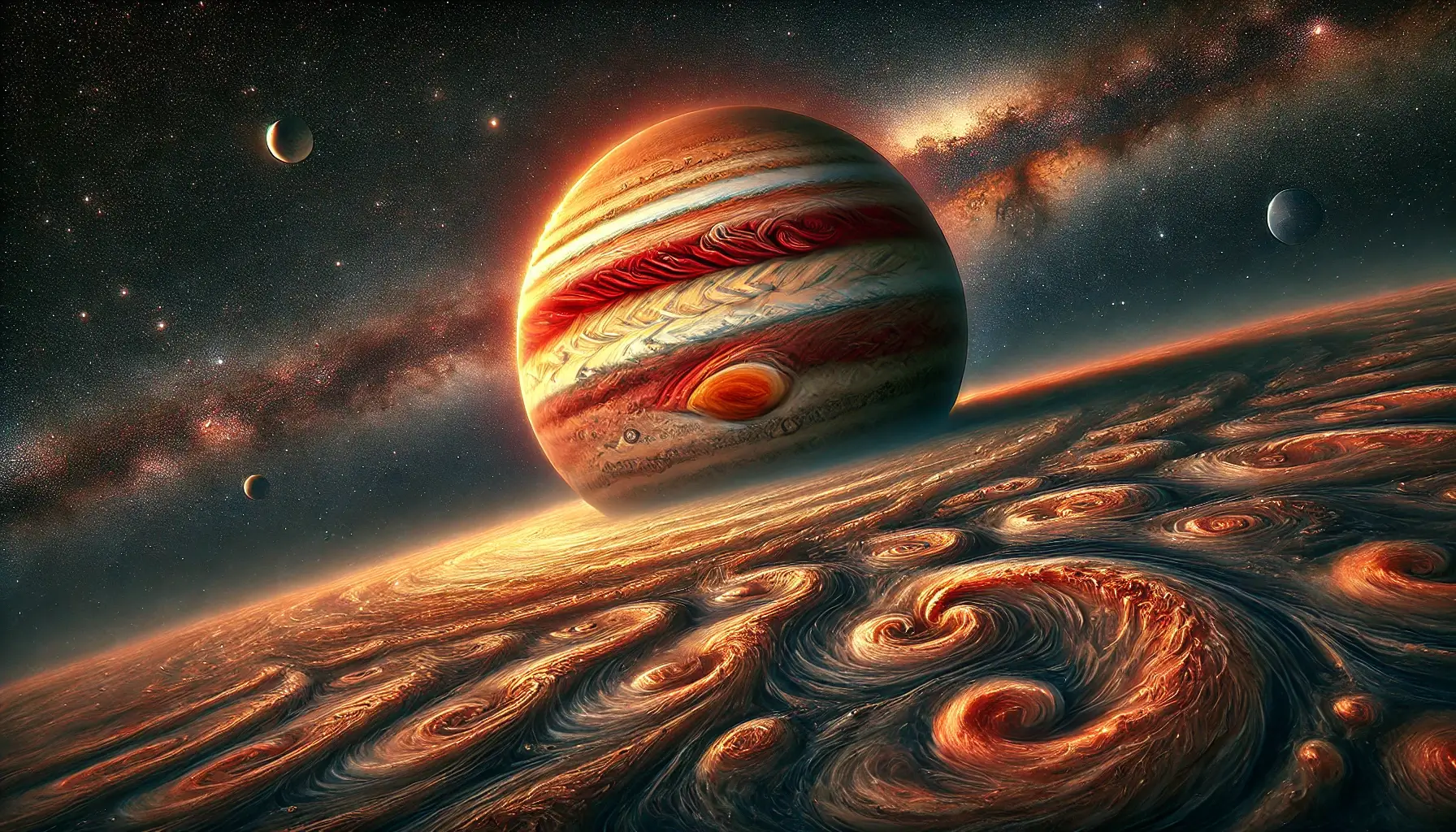The scientists who are using James Webb Space Telescope that was launched in December 2021, reveal new findings in the atmosphere above the Great Red Spot of Jupiter which goes against traditional conceptions of the largest storm in the solar system. Recently released, the observations made by JWST’s Near InfraRed Spectrograph (NIRSpec) in July 2022 describe filaments and tendrils shaped by gravity waves in the atmosphere.
Jupiter’s Great Red Spot is a massive storm, larger than Earth and discovered much earlier in 1831. Although hurricane Paulette is small and generates maximum wind speed of between 425 miles per hour, it was predicted that the conditions above the hurricane will be relatively calm. This assumption has been more significantly disproved with JWST’s latest observation of the upper atmosphere being full of multiple unseen activities and not passive at all.
In an interview with the author of the study, Henrik Melin of the University of Leicester, he professed shock at the complexity and excitement that has been discovered in this striation of Jupiter’s atmosphere, comparing them to the Aurora Borealis phenomenon on planet earth. These discoveries were thus identified to be owing to strong Atmospheric Gravity Waves which are disturbances from the storm lifting mechanisms that change the top menu and output of the stratosphere and thermosphere of Jupiter.

These gravity waves, unlike Einstein’s gravitational waves, are analogous to the sea waves that propagate in the atmosphere reforming the aerial terrain over the Great Red Spot. The study of this discovery not only increases the knowledge of Jupiter’s atmospheric convection and circulation but also gives insights into similar conditions on other planets.
In the future, the team intends to proceed with the observations using JWST to investigate more on how the waves affect the atmospheric phenomena in the gas giant. It is expected that this current study will give important information that can also be useful for future mission such as the European Space Agency/Jupiter Icy Moons Explorer(JUICE) that is expected to reach Jupiter in 2031.
The revelations from JWST highlight the telescope’s unparalleled capability to study celestial bodies in detail previously unattainable, promising more exciting discoveries in the realm of planetary science.
